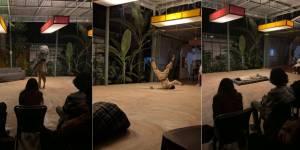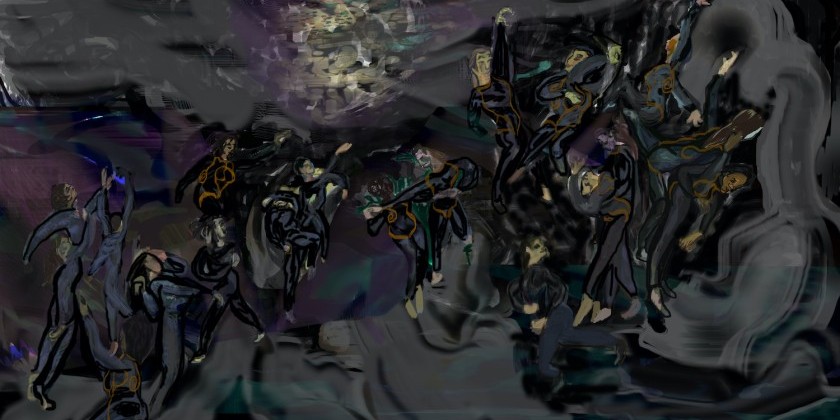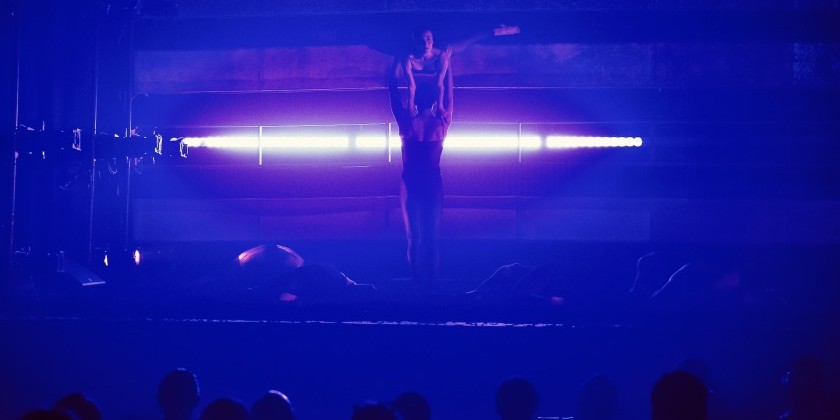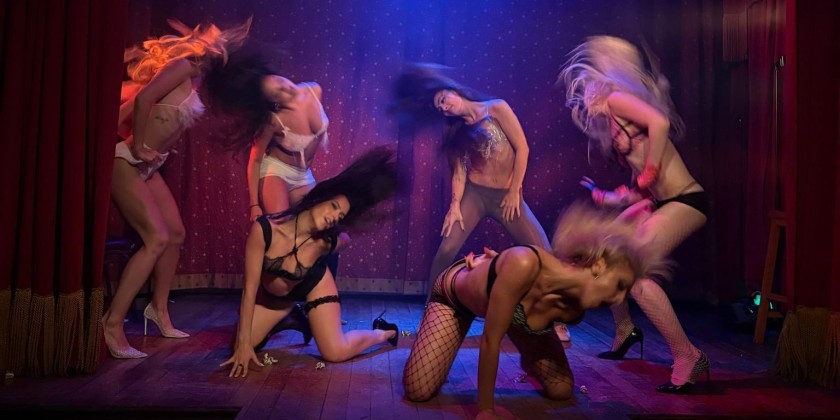AUDIENCE REVIEW: "Us Around the Table" by Jiemin Yang
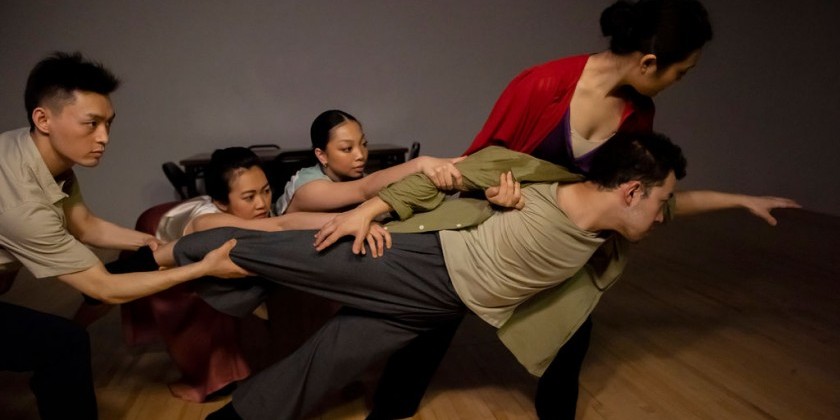
Company:
Jiemin Yang
Performance Date:
04/09/2022
Freeform Review:
Us Around the Table is a contemporary dance work by Jiemin Yang. It was commissioned by Queens Council on the Arts’ Artist Commissioning Program (ACP) with support from the Mertz Gilmore Foundation and the New York City Department of Cultural Affairs. According to the Queens Council on the Arts’ website, the ACP awarded commissions to Queens-based artists whose art works would “tell untold stories that highlight underrepresented protagonists.” Us Around the Table was additionally developed with the support of a 2021-22 CUNY Dance Initiative Residency at Queens College, Kupferberg Center for the Arts.
Us Around the Table is a call to action for challenging traditional values. While there is respect and importance in carrying on cultural traditions, the dance emphasizes putting love and honesty first.
The audience witnesses the story of a young male-identifying Chinese immigrant, now living in the United States, who navigates coming out to his family. The protagonist was danced by Tsubasa Nishioka. The protagonist is particularly concerned about coming out to his mother, who was danced by Sumire Ishige. The story takes place at their family dining table. Joining Tsubasa and Sumire around the table were Glenna Yu (who danced sister “Lan”), Maya Lam (who danced sister “Mei”), and Jun Zhou/Dream (who danced “Father,” and later danced a separate character as the Inner Self to the protagonist).
The sound score for Us Around the Table was a combination of recorded voices in both English and Mandarin and musical composition by James Acampora. The dancers often moved when their character’s voice spoke, allowing the audience to hear both the family’s conversation and each character’s internal thoughts.
The dancers were dressed in free-flowing costumes designed by Hao-Yun Emily Hsieh. Each dancer wore a different color, suggesting that each character had their own personality and did not desire to be exactly like one another. Sumire, as the mother, was adorned in a bold royal purple top with a red cardigan, which gave her the appearance of a butterfly in flight. Her costume’s strong colors also suggested that she was the head of the table. The other four dancers were dressed in more neutral shades of green, gray, white, brown, and blue.
“Tradition is not run by love, but by rules. The table connects us, but also separates us,” stated the voice of the story’s hero in the opening of the work. Tsubasa Nishioka set a strong, anguished tone for the story. He was seen standing at the center of the dining table alone. He held onto the table for stability while rubbing his chest and throat, as if checking his pulse. His eyes searched upward, he stepped downstage, and collapsed; as he was immediately engulfed by his family members. The family picked the protagonist up, and pulled his limbs in different directions, in correlation with the protagonist’s internal anguish. The protagonist was suspended in a lift by the four family members, his body completely horizontal, before being tossed to the floor, flat as a board.
The scene shifted to about thirty years ago, and the audience learned about the protagonist’s mother. Sumire Ishige danced a solo with regal confidence, finding beautiful pauses, swirls, and stretches in her movement in parallel with the voice recording’s spoken rhythms. Within her larger dance movements were smaller hand gestures, which were articulate and meaningful. The audience hears the mother’s story of immigrating from the southeast of China to the United States in 1992 in order to give her family a more prosperous life. Standing out amongst the spoken dialogue was a moment of vulnerability: “The table I serve is always full…but the table where I live is always empty.” In this moment, the mother sat at the head of the table and dropped her head down.
The family reconnects together at the dining table once everyone is home from their respective days at work. The family compares how much money they earned during the day, with Lan and her mother emphasizing that, “Making money is not easy in America,” despite their full days of exhausting work. Lan and her mother dance alternating solos as they converse, incorporating drops to the floor for emphasis on their tiredness, and gentle touches for empathy.
The first moment of dance unison comes after the mother exclaims, “Come! Let’s have dinner!” All five dancers begin gestural, swirling movement around the dining table, digging into their meal and sharing community with one another. Their unison suggests to me that sharing this meal is a sacred ritual, one of the most important moments of the day. They have each movement of this ritual so embedded with themselves that it is second nature. They are a family, and each person has been taught their role within the family, in order to keep their family dynamic balanced.
However, the protagonist was internally struggling with his role in the family, and questioning why their traditions cannot change. He feared rejection if he were to be honest. The protagonist ends up on the floor under the table after the moment of unison. The mother continued dancing over top of her son, talking about how it is time for him to look for “a real job” and “get a girlfriend.” She also informed him that, “Marriage and building a family is a grown man’s duty. You are Chinese, and my son. It is our tradition.”
The protagonist, anguished, wondered if he was nothing more than a, “tool for replicating human beings.”
The protagonist and his mother were left alone at the dining table to talk. He tells his mother that he didn’t know how to tell her, but that he is gay. The mother wonders, “How could this happen in our family? How can you betray us? If everyone is like you, there will be no more future generations!” Tsubasa and Sumire partner one another, dancing smoothly and beautifully despite their character’s vehement disagreements, which were aligned with dynamic combat-like movements between the two characters.
“Having freedom makes me happier,” the audience hears the protagonist say as he dances. “I want to choose my life. Lying [and pretending to be straight] will never end well. Don’t you want me to be honest and happy? Don’t you love me?”
Their heartfelt conversation is cut off when the father re-enters. They pretend as if nothing had happened, that it was “nothing.” The mother leaves the scene, leaving her son alone. Tsubasa picks up a dining chair, and dances with it, much like his solitude in the beginning of the piece. “Finally, I openly faced her…and myself,” he says.
The scene shifts when Tsubasa is joined in the space by Jun Zhou/Dream. Dream, no longer playing the father but Tsubasa’s Inner Self, invites Tsubasa to an intimate tango. Dream confidently leads Tsubasa in their duet, lifting him off of his feet and twirling him around. According to Jiemin who is currently studying Argentinian tango, tango is about connection and listening. The embracing and stepping-in-synch revealed the protagonist’s connection to his Inner Self character. Nearing the end, Mother sits on the table with Lan and Mei, and the audience can hear her thinking, “I won’t be full, if we don’t have his life become full.”
The dance leaves the audience with these words: “Will love take over the right rules?” Us Around the Table reminds us that is more important to be who you are, and not who any person or society expects you to be.
Author:
Kristen Hedberg
Website:
kristenhedberg.org
Photo Credit:
Hisae Aihara




